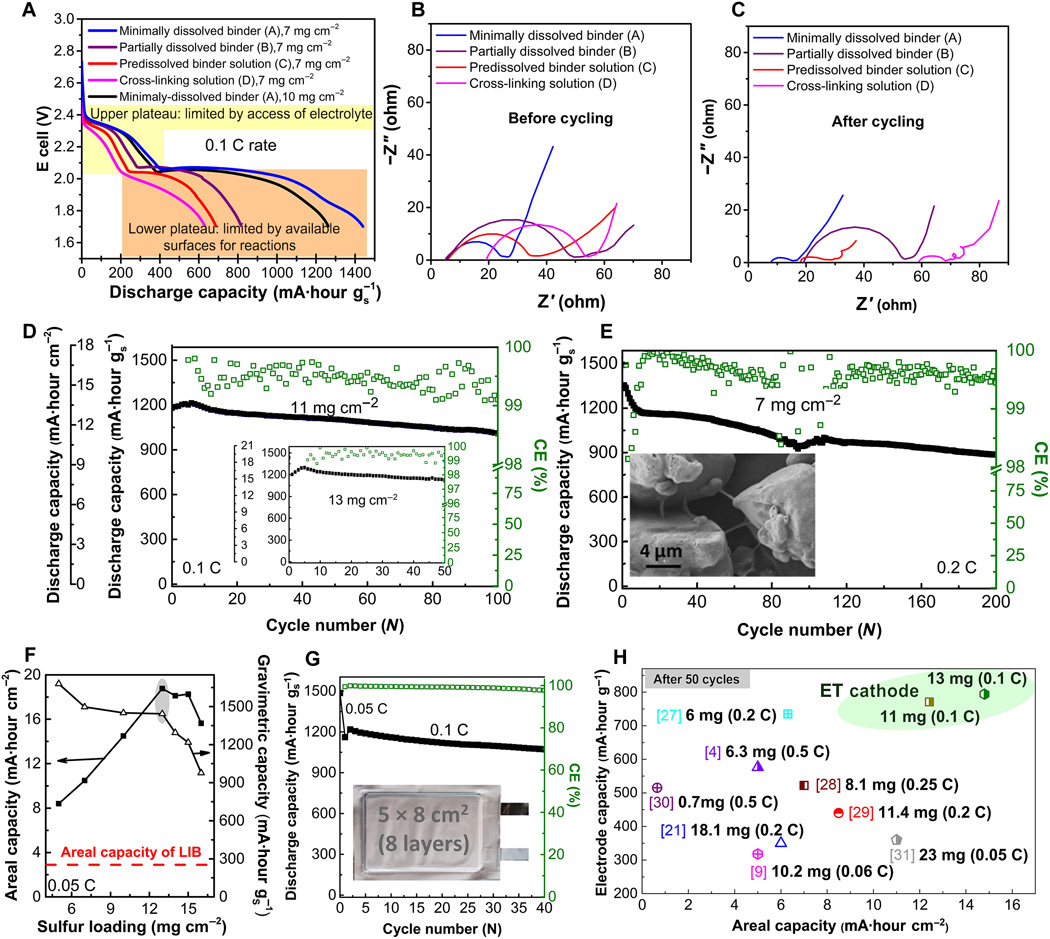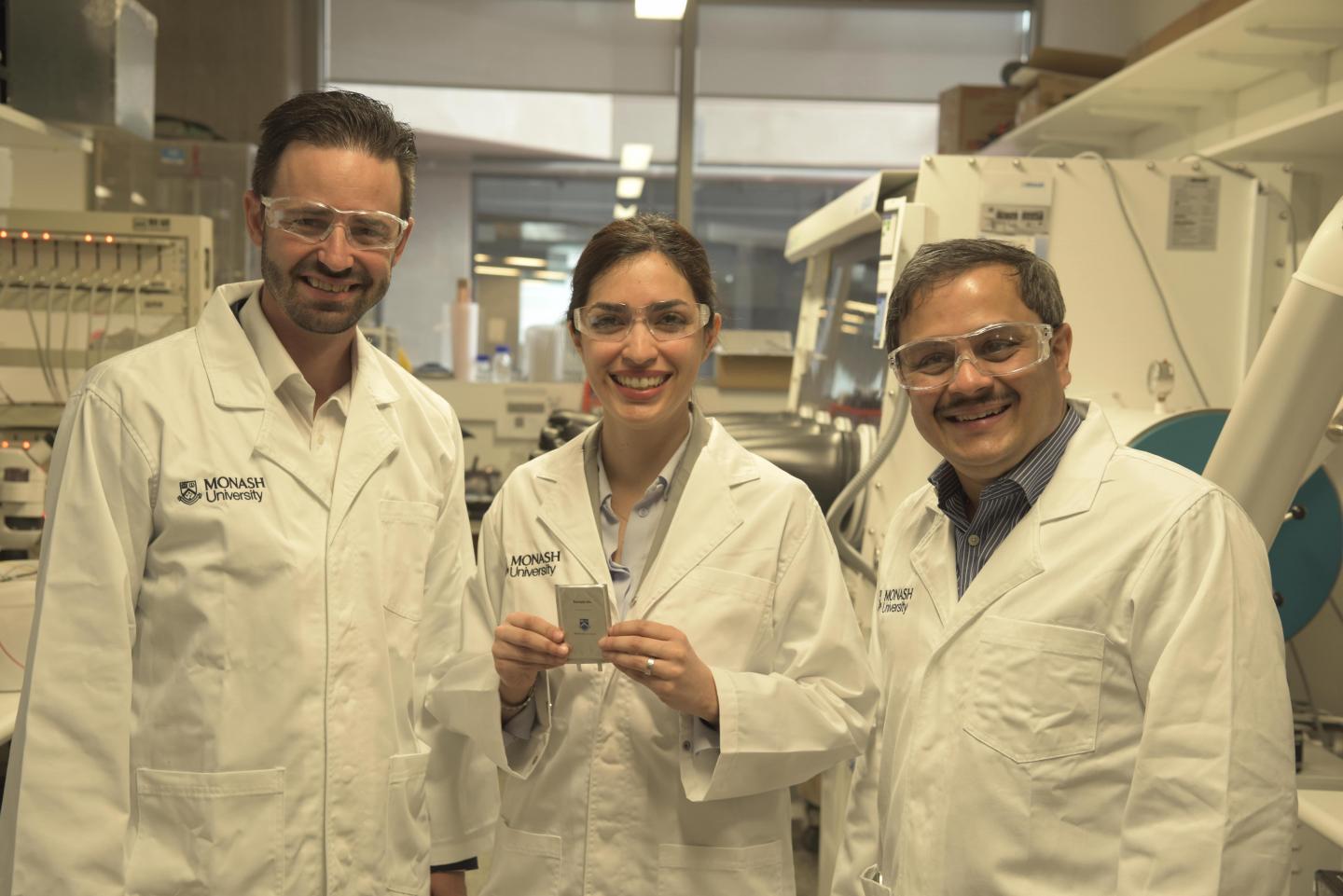They say their ultra-high capacity Li-S battery has four times better performance and less environmental impact than current lithium-ion products. Improvements are certainly needed. Li-ion batteries were developed decades ago and while technology has zoomed into the future in many areas, in battery storage it has not. The lack of progress holds back applications that require storage, like solar power.
Using the same materials in standard lithium-ion batteries, researchers reconfigured the design of sulphur cathodes so they could accommodate higher stress loads without a drop in overall capacity or performance. Inspired by bridging architecture first recorded in processing detergent powders in the 1970s, the team engineered a method that created bonds between particles to accommodate stress and deliver a level of stability not seen in any battery to date.

Cycling performance of high-loading sulfur cathodes. (A) Comparing the discharge profile of different cathodes demonstrates the superiority of cathode A over other cathodes; long-term cycling, CE, and 0.5 C discharge profile comparison is available in fig. S10. (B and C) Electrochemical impedance spectroscopy: the evolution of cell impedance for the four cathodes, demonstrating the importance of the ET architecture in maintaining good contact with the current collector and excellent electron/ion conductivity upon cycling. (D) Excellent cyclability of ultrahigh-loading cathodes prepared via the undissolved binder approach in terms of gravimetric capacity, areal capacity, and CE at 0.1 C rates. (E) Excellent long-term cycling performance of a sulfur cathode prepared via undissolved CMC binder and expanded graphite as the conductive agent at 0.2 C; CE remains close to 100% after 200 cycles. (F) The plot of areal and gravimetric capacity as a function of sulfur loading demonstrates that the optimum performance happens at 13 mg cm−2. (G) Performance of cathode A in a pouch cell configuration demonstrates excellent correlation with coin cell data; energy metrics are calculated on the basis of the whole package and are shown in fig. S13. (H) Comparing the areal capacity and total gravimetric capacity of the cathodes after 50 cycles (calculated on the basis of the mass of S/binder/carbon) in various references demonstrates unique metrics for our cathodes.

Associate Professor Matthew Hill, Dr. Mahdokht Shaibani and Professor Mainak Majumder. Credit: Monash University
Citation: Mahdokht Shaibani, Meysam Sharifzadeh Mirshekarloo, Ruhani Singh, Christopher D. Easton, M. C. Dilusha Cooray, Nicolas Eshraghi, Thomas Abendroth, Susanne Dörfler, Holger Althues, Stefan Kaskel, Anthony F. Hollenkamp, Matthew R. Hill, Mainak Majumder, Expansion-tolerant architectures for stable cycling of ultrahigh-loading sulfur cathodes in lithium-sulfur batteries, Science Advances, 03 Jan 2020 eaay2757





Comments